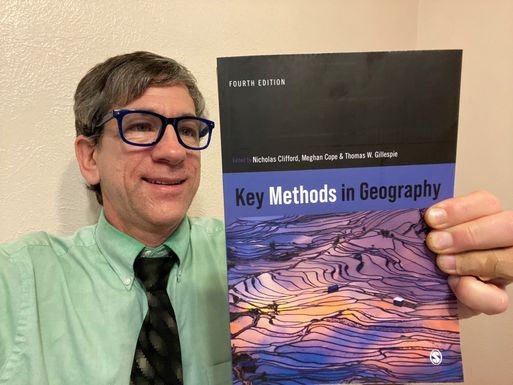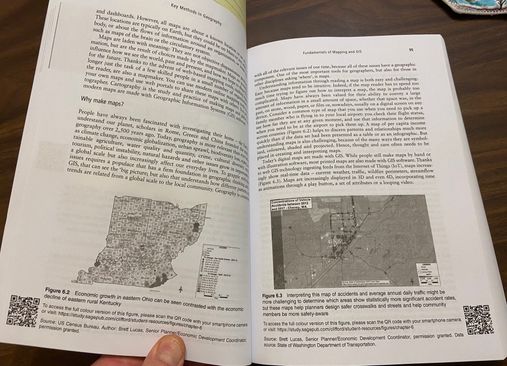- Home
- :
- All Communities
- :
- Industries
- :
- Education
- :
- Education Blog
- :
- New Fundamentals of Mapping and GIS chapter and Ke...
New Fundamentals of Mapping and GIS chapter and Key Methods of Geography book
- Subscribe to RSS Feed
- Mark as New
- Mark as Read
- Bookmark
- Subscribe
- Printer Friendly Page
- Report Inappropriate Content
I have written a fundamentals of mapping and GIS in the Fourth Edition of Key Methods of Geography textbook, published by Sage Publications. If you are seeking a single chapter about what GIS is and why it matters, this might very well fit that need. Beyond my chapter, the book contains a great deal of pertinent content about, as the title indicates, key core methods essential for the geographic sciences, including field data collection equipment and methods, statistical analysis, spatial analysis, remote sensing, and much more. The book was edited by the following experienced geographers who I have a great deal of respect for. These people really know what they are doing; they have crafted a book that provides foundations but also is very practical and up-to-date, and it was a great honor to be asked to contribute a chapter to their book:
- Nicholas Clifford - Loughborough University, UK
- Meghan Cope - University of Vermont, USA
- Thomas Gillespie - University of California, Los Angeles, USA
Joseph Kerski pictured with the new book "Key Methods in Geography" by Sage Publications.
The book's chapters include identifying key literature for your assignment, interviews and focus groups, researching affect and emotion, historical and archival research, exploring the physical environment, UAS/UAV/drone research methods, case studies, scholarly writing, coding, organizing and analyzing, and much more. The book concludes with the chapter "Doing Engaged Scholarship: Why Methods Matter" again reflecting the practical nature of the book.
I begin my chapter with a story about crowdsourcing as a result of a potential tragedy--an oil spill off of a beach in Southern California, and build from there about what GIS is, how it is different from the GIS of the past, and why it all matters. In the chapter I even start with challenging the definition of "map" that many people might have in their minds, nudging them to consider maps as analytical tools and not just reference documents. I then discuss spatial data, geotechnologies, the goal of GIS, topology, spatial data, data models, spatial statistics, geoliteracy, how GIS has evolved, and encouraging the reader to consider GIS in the reader's own career pathway. I include data quality, ethics, forces acting on GIS, and skills important to the reader seeking to use GIS for the first time or to deepen their use of it. I did everything I could to ensure that GIS is considered a "key method" of geography and geographers, and not relegated to "just the GIS people." I included plenty of lively and intriguing maps and illustrations throughout the chapter.
A section of my chapter on GIS.
I am happy to share my chapter with you upon request but I really encourage you to investigate and use the entire book. I highly recommend the book for faculty teaching research methods, and/or physical/cultural geography and geotechnologies, and for any student in geography, GIS, or environmental sciences.
--Joseph Kerski
You must be a registered user to add a comment. If you've already registered, sign in. Otherwise, register and sign in.
-
Administration
39 -
Announcements
46 -
Career & Tech Ed
1 -
Curriculum-Learning Resources
182 -
Education Facilities
24 -
Events
48 -
GeoInquiries
1 -
Higher Education
520 -
Informal Education
266 -
Licensing Best Practices
47 -
National Geographic MapMaker
17 -
Pedagogy and Education Theory
189 -
Schools (K - 12)
282 -
Schools (K-12)
187 -
Spatial data
24 -
STEM
3 -
Students - Higher Education
232 -
Students - K-12 Schools
89 -
Success Stories
22 -
TeacherDesk
1 -
Tech Tips
83
- « Previous
- Next »

